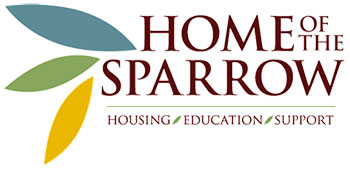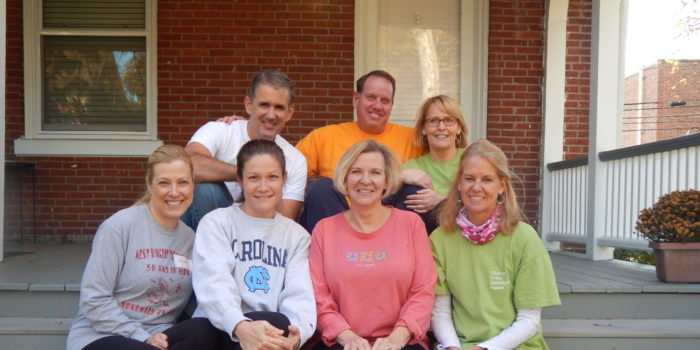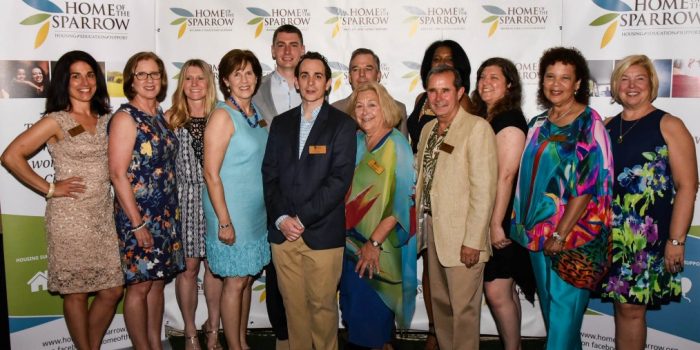5 Reasons why women in their 50s face homelessness in Chester County
In our 50s, we all want to be at a point where we have financial stability and happiness in our professional and private lives. For many women, especially single mothers, this scenario might never become a reality. While they work, raise families, tend to their relatives and care for their community – single women are facing additional burdens.
Home of the Sparrow is seeing an increasing number of single women in their 50s who are on the verge of experiencing homelessness. They are struggling, often in secret, and doing everything they can to make ends meet. One in eight women lives in poverty in the United States and every 5th child grows up poor. Why is it that women are 35% more likely to live in poverty than men?
Why are so many women in danger of becoming homeless in their 50s? Here are the 5 most common factors:
1. High Cost of Living
This might not be news to you – living expenses in Chester County are extremely high, far above the national average. That makes being the sole provider for a family twice as hard, compared to a household with two incomes. Here is an example: a single mom with two kids would have to make an hourly wage of $29.43 or earn $61,222 (before taxes) per year just to afford living in Chester County.
Women working in professions such as social services, education, arts, design & media, food preparation, administration and healthcare support have average annual incomes far below that. Unless you work in a high paying field like management, computers, architecture, engineering etc., chances are that that you are struggling from month to month.
2. Kids
Kids are our future, and yet, it is close to impossible for single mothers to raise children with the same opportunities that their peers have in Chester County. While teens don’t need expensive services like daycare, they are most likely getting ready to attend college. This means tutoring, test preparation, choosing a school and many more things to budget for. A moderate public college averages at $24,610 per year. Financial aid and scholarships can certainly ease the burden and students can take on a part-time job, but parental support is still crucial.
3. Women as Primary Care Givers
Many women in their 50s take care of their parents or relatives. The majority of older persons with long-term care needs exclusively depend on family and friends. The role of the family care giver is still mostly assumed by women. This puts an extra financial burden on them in terms of missed work hours and unpaid work. An estimated 66% of caregivers are females and they provide an average of 20 hours per week of unpaid care. In addition, women are much more likely to stay home or reduce their hours to take care of a relative. This can have severe financial consequences not only for the present but for their social security eligibility later on.
4. Gender Pay Gap and Retirement
We’ve heard it a lot in the last couple of years, but have you thought about the life-time implications that the gender pay gap has for women? On average, women earn 80% of what men earn (3). In Pennsylvania, the ratio is even worse with women making 75%-79% of what a man would make in the same position. The National Women’s Law Center calculated that this equals a loss of earnings of $418.800 over the course of a 40-year career. For Latinas, the life-time loss mounts to $1.043.800 for the same time-period. The American Association of University Women (AAUW) calculated the losses for a 47-year period, finding that a Highschool Graduate will lose $700.000 throughout her career and a female college graduate up to $1.200.000. Compared to men, women still have significantly less funds available for their retirement savings. This makes them twice as likely as men to live below the poverty line during retirement.
5. Financial Literacy
For many single women, money is a major source of anxiety. When making rent next month is the priority, how do you start to think about retirement or savings? It doesn’t help that managing personal finances is becoming increasingly difficult. Financial products are more complex than ever before. The majority of Americans lack the skills to navigate them. A survey on financial literacy found that only one third of Americans over the age of 50 were able to answer 3 questions about basic financial literacy.
These are only the most common factors that we see, but so many more contribute to the high rates of poverty and housing insecurity for single women. Home of the Sparrow provides a support network for women in their 50s and 60s, offering financial skills training, housing support and access to community resources. We believe that nobody should have to experience the trauma of homelessness in our community. For so many women who cared for others all their lives, this is the first time that they have a support system.
To learn more about our programs, please visit homeofthesparrow.org



